Deep Inside the Blues by Margo Cooper
Book Review by Andrew Matthews
When Noam asked me if I was interested in reviewing this book, I was both excited and nervous. Excited, because I love music, books, writing and photography; nervous, because I do not consider myself to be much more than a novice when it comes to this essentially limitless genre of American music. Further, the blues is so inextricably linked to the culture from which it emanates that I had serious doubts as to whether someone like me could capture what the book represents, and – at the very least – do it some semblance of justice.
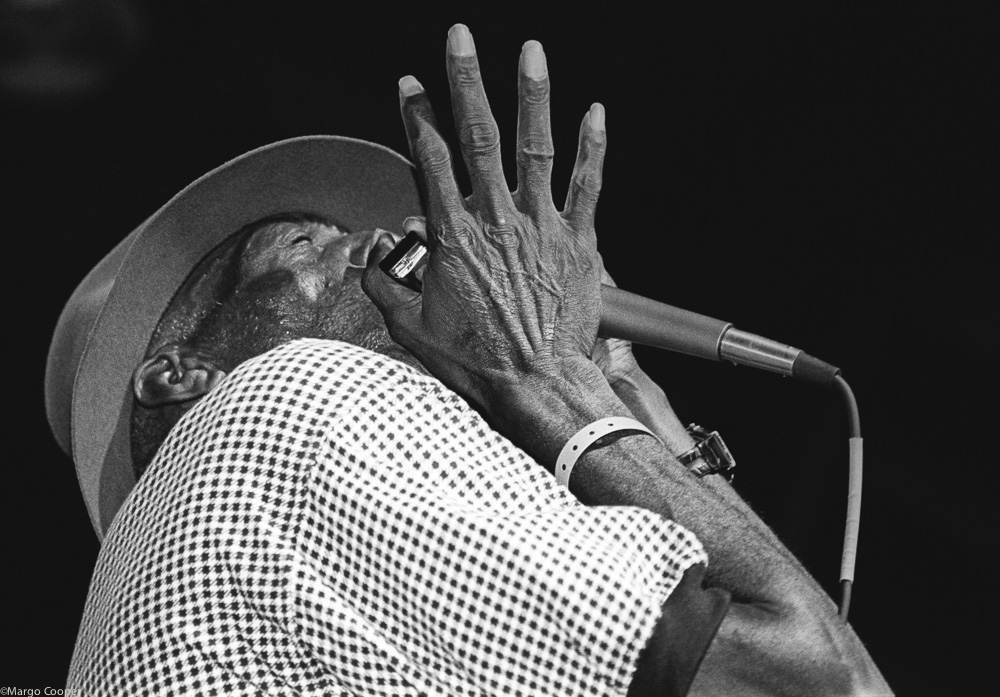
Deep Inside the Blues is a compilation of interviews with and photographs of several Mississippi blues musicians by documentary photographer and oral historian Margo Cooper. In the Foreword, William R. Ferris – author, scholar and former Chair of the National Endowment for the Humanities hails it as a “major contribution to how we understand the blues and State of Mississippi,” and identifies it as a powerful complement to other seminal works on the genre. Indeed, the physical attributes of the book offer some insight into what lies ahead for the reader – a large, heavy coffee table tome of approximately 350 pages, filled with professional black and white photographs and painstakingly transcribed interviews with 33 Mississippi blues legends. The book is organized into four main sections. The first section covers the northward migration of some of these musicians to Chicago in search of better living conditions and playing opportunities. The remaining three sections cover the different styles of Mississippi blues based on region – namely, the Delta, Beyond the Delta (which includes the Piney Woods) and the Hill Country.
Margo Cooper’s Preface gives a further hint at the fascinating journey that awaits, but it also revealed the pleasant surprise that she and I have some things in common. Ms. Cooper attended high school in upstate New York, where she took some photography classes. She followed her heart and pursued her love of photography further after attending law school. I grew up and went to high school in Windsor, Ontario, was an enthusiastic amateur photographer and graduated from law school later. Ms. Cooper writes that her friend introduced her to the blues, and although their lives were “far from Mississippi and the West and South Side of Chicago, the Mississippi Delta and the Hill Country of North Mississippi, the music moved something inside of us.” My hometown of Windsor, Ontario is directly across the river from Detroit, Michigan, so the varied rhythms of what is surely one of the world’s most musical cities were a constant presence in my life. My introduction to the blues was through frequent visits to Detroit’s outdoor festivals and numerous downtown establishments, which included the (now demolished, sadly) Soup Kitchen Saloon. Trips to Chicago would include stops at Kingston Mines and Buddy Guy’s Legends Grill. I now wonder if any of the performers I saw (or people in the audience) played with or otherwise knew the musicians whose stories Ms. Cooper presents.
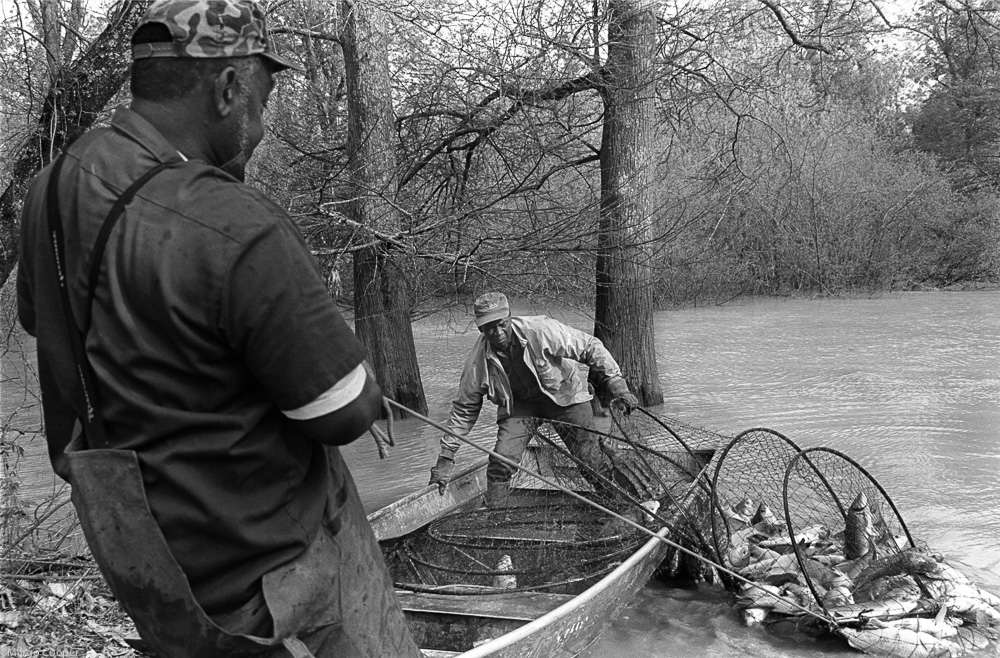
This book is perhaps the best example I have ever encountered of what is possible when one follows one’s passion(s) without compromise. Continuing with the Preface, we learn that Ms. Cooper did not expect to become a professional photographer but was dedicated to the craft, even as she worked as a lawyer. She took myriad courses and honed her skills at the New England School of Photography and sought out avenues and people she believed would help her. It was in New England’s thriving blues scene of the early 1990s that the roots of this book began to take hold. (Ms. Cooper informs us that the first House of Blues opened in Harvard Square(!) in Cambridge, Massachusetts in November 1992 and became a hub for national blues acts.) Ms. Cooper was a regular presence in these New England venues, “finding my way,” as she puts it, listening to music and learning how to photograph musicians in clubs. Eventually, she would begin contributing photographs and stories to Blues Wire magazine, with what she describes as her first photo essay on Luther “Guitar Junior” Johnson.
The background on Ms. Cooper is critical to understanding the final product, because she describes step-by-step how such a monumental undertaking took shape. Luther Johnson agreed to collaborate with Ms. Cooper on an oral history for Living Blues magazine, and Ms. Cooper’s words about Living Blues are, in my opinion, the second-most important in the book:
“Because of its connection with the Center for the Study of Southern Culture and the University of Mississippi, Living Blues is more than a music magazine. It has a mission to document the African American Blues tradition, which was exactly what I was now wanting to do.” (Emphasis added.)
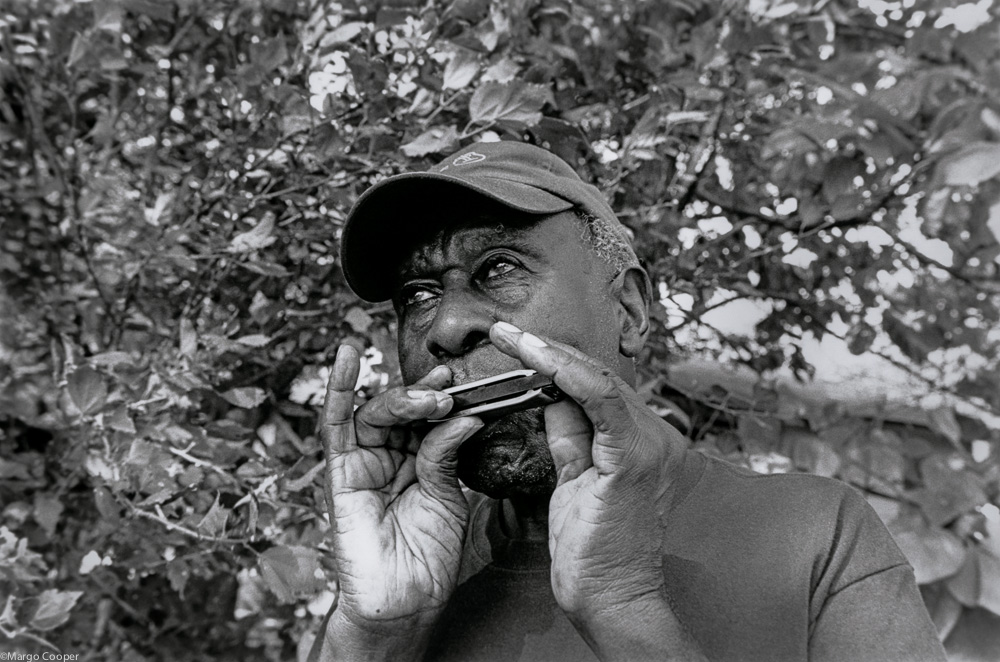
Ms. Cooper tells us that instead of handwriting notes as fast as she could, she started using microcassettes to record the interviews. She explains “it was labor-intensive, but I wanted to get not only the exact content of what the musicians had to say, but the way in which they said it, their emotions, the rhythm of their speech, which was its own music. I began to see the possibilities of a deeper kind of blues story.” (Emphasis added.)
Without exception, Deep Inside the Blues is a chronicle of hardship – specifically the unique multi-faceted hardship of Black people living in the Jim Crow South. These are raw, unvarnished portraits of life experiences that are entirely foreign and unimaginable to many people who lived anywhere else. That these stories are recounted in the musicians’ exact words creates deeper meaning and impact in passages that are (with uncomfortably high frequency) quite troubling to read. These are the tales of people like Mickey Rogers, who said “the blues come from Mississippi from hard labor.” Rogers described a life that was so full of hard labour that one “couldn’t do nothing but sing the blues.” At the end of the day, “all you done for yourself was survived – it’s a blessing to be survived.” “Cadillac John” Nolden’s parents were sharecroppers and he lived on two plantations. He grew up listening to men working in the fields, singing the blues. (The chants and hollering he heard also form essential elements of other genres of Black music.) Mr. Nolden worked as a water boy when he was eight years old, and says, quite simply, “Blues comes out of my life experience – the hard times, the lonely times, the poor times.” To her great credit (and consistent with her aims for this book), Ms. Cooper presents the full picture by letting the musicians’ words convey their own stories, without editorializing or attempts to soften the abundant harsh realities of life. A photo of birth records in one Mississippi county, separated into “white” and “colored” stacks, is a particularly effective reminder of place.
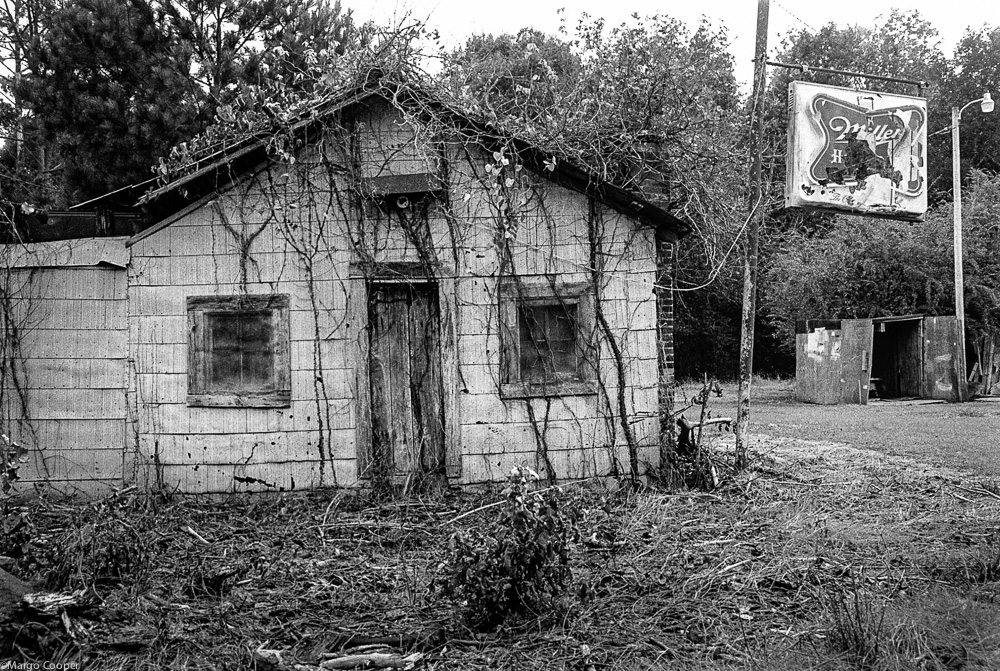
Professor Ferris’s Foreword describes the environment in which these musicians were raised as “bleak,” yet he also tells us the interviews “carry us beyond the flattened blues stereotype,” which description really stayed with me as I read the interviews. Yes, we all know the stereotypical blues portrayals – it is the blues, after all – but these interviews carry you directly into the individual lives of these individual musicians. The backbreaking manual labour jobs they held during the day – working from “sun to sun” with no money to show for it at the end of the day. The constant threat of, and numerous actual encounters with, astonishing violence. The barbaric murder of Emmett Till in Mississippi in1955 is recounted by several of the interviewees. Sociologists have identified a subculture of violence in the American South, which is amply documented here. Having read Kevin Phinney’s Souled American: How Black Music Transformed White Culture and A Jazz Odyssey by Oscar Peterson, I am certainly well-aware of the dangers that Black musicians (and Black people, generally) faced in the South and elsewhere (the 1956 KKK attack on Nat King Cole, while onstage in Birmingham, Alabama is mentioned in all three books), but the personal nature of the stories in this book connect the reader to the musician and his or her life in a way I have not previously experienced. It is little wonder the parties and celebrations described in the book were so robust and lasted into the morning hours.
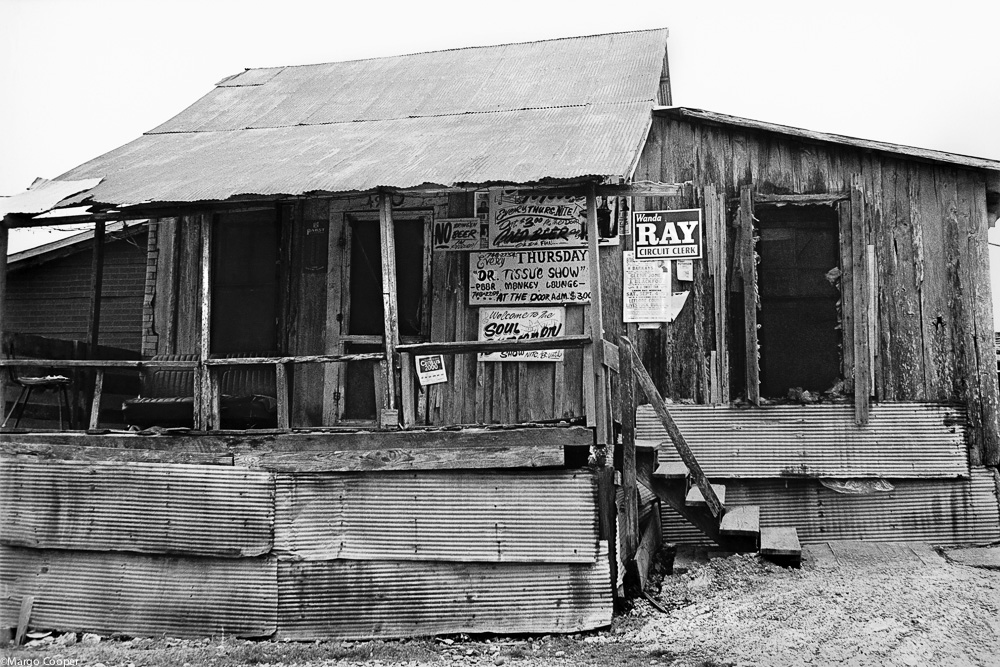
The professional black and white photographs, so thoughtfully curated by Ms. Cooper, cannot be easily described, other than to observe they represent both the human and individual themes that are the foundation of the book itself. These are pictures you see and feel. The 33 musicians interviewed will not be household names for many – indeed, names like B.B. King, Muddy Waters, Howlin’ Wolf, Elmore James etc. – are mentioned throughout the book, but they are not the interviewees. To heavily paraphrase an old saying, this is one book that you should judge by its cover photo. In a plaid shirt and well-worn Raytheon ball cap, eyes closed in deep concentration, the contrast of black and white film showing every feature of his face, the cover photo of Otha Turner playing his cane fife in 2001 is the “picture is worth a thousand words” mission statement of this book. Mr. Turner died roughly two years later in 2003 at the age of 95, and his legacy is still celebrated in Mississippi with an annual picnic in his name.
The book’s greatest success – again, consistent with Ms. Cooper’s aims – is the depiction of human triumph over adversity. Personally, I try to avoid speaking or writing in these terms, because they are currently overused and applied indiscriminately to almost any situation today, regardless of gravity. However, when you read these interviews and see the accompanying pictures of the environments they describe, no other conclusion is possible. Ms. Cooper’s project began after the passing of Frank Frost, the subject of one of her favourite photos – she captured him “blowing harp” (mouth organ) in 1998. When she realized nobody had ever done an in-depth oral history of Mr. Frost, she dedicated herself to doing “as many oral histories of the musicians in Mississippi as I could, particularly the older generation.” She describes how she became deeply involved in their lives, building trust and befriending family members. It took her years to write some of the histories and in some cases, she added additional material later.
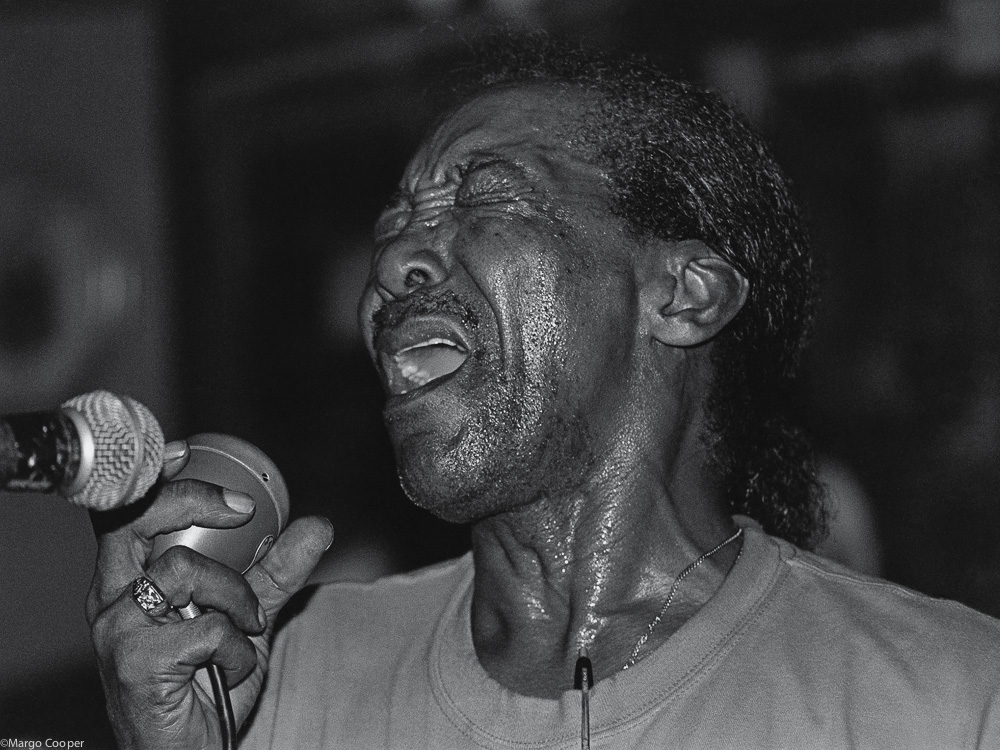
Earlier in this review, I identified Ms. Cooper’s description of Living Blues magazine as the “second-most important” words in the book. That is because the most important words in the book also come from Ms. Cooper. She writes, “These stories are part of our national heritage. For me, remembering is sacred, a duty.” This statement in the Preface will remain in the reader’s mind during the entire time one spends with this book. Deep Inside the Blues is a superlative accomplishment that would not have been possible without framing the project in exactly those terms – anything less would not have produced the same result. This book is the antithesis of our miniscule attention span, meme-and-misinformation digital world and provides a most welcome respite from it. Those with even a passing interest in the blues will admire its wealth of information, beautiful photography, and, above all – its sheer humanity. Bravo, Ms. Cooper – I cannot imagine a finer tribute to a more deserving group. Highly recommended.
Deep Inside the Blues: Photographs and Interviews
By Margo Cooper
Foreword by William R. Ferris
Series: American Made Music Series
University Press of Mississippi
Hardcover: 9781496847416, 384 pages, 168 b&w photographs, November 2023
All photographs and excerpts © Margo Cooper, All Rights Reserved
Author’s website: https://www.margocooper.com/
Review copy courtesy of BookBuzz.
Please join me in welcoming Andrew to our roster of contributors. -Ed.


Hi Andrew,
Well done! Well done indeed for your first Wall of Sound contribution. Noam has great trust in his instincts about selecting writers for WoS. I hope you will do many more reviews.
I too was raised across the river from Detroit and the music of Motown had a huge impact on me as a teenager. A bit later I discovered the deep blues and followed that with several visits to Mississippi. Old Miss is another world, almost another planet from the rest of North America. If you want more detail on the history of the blues I really do recommend Robert Palmer’s book ‘Deep Blues’. It is a classic.
Cheers,
David Neice
Hi David,
Thank you for the welcome and kind words. So nice to see someone else with a Detroit connection! I’m more than a bit envious of your Mississippi experiences, and really have started thinking more about how I might make that happen.
In the Foreword, Professor Ferris lists Robert Palmer’s ‘Deep Blues’ as one of only a few of the seminal books in the genre, so thank you for the recommendation. I look forward to picking it up in the future.
Best regards,
Andrew
A few years ago I went to a blues festival in Mississippi, and before leaving picked up some rare recordings. I’ll be returning this summer.
While there I met a gentleman whose brother has a juke joint in Louisiana, a spot that is also on my summer “go to” list.
Thanks for this very fine review. Don’t stop here… you must have a few more books you can recommend.
Thank you, Marcus – sounds like you have your next music destination picked out already. I cannot say I have read a ton of books about music in my life – but I can recommend the ones mentioned in my review – “Soulled American” by Kevin Phinney and “A Jazz Odyssey” by Oscar Peterson. Ironically, Dickey Betts’ passing last week reminded me that I read a biography of the Allman Brothers Band over 20 years ago. All of these books are connected to Southern music to some degree, and the reader is aware of how Southern culture is an integral part of that music.
I’ve read a number of music bios, three that really stood out and I’d call “favourites”: Ramblin’ Man – The Life and Times of Woody Guthrie. Chronicles Vol 1 by Bob Dylan. Born to Run by Bruce Springsteen.
Noam
I’ll go ahead and recommend my favorite music bio: Al Kooper’s life in music, the version I read, originally published as “Backstage Passes.”
It was republished, quite a few years after going out of print, with updates as “Backstage Passes and Backstabbing Bastards.”